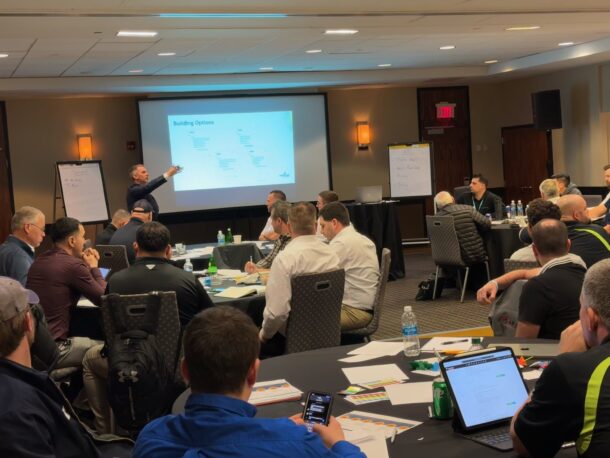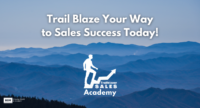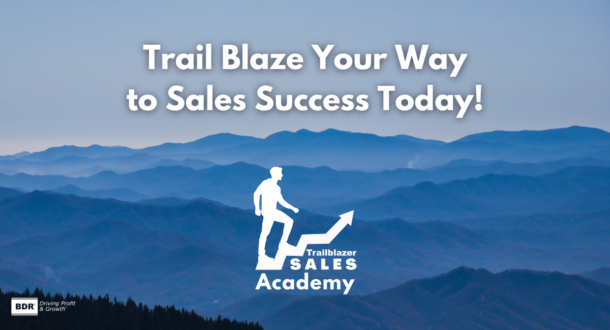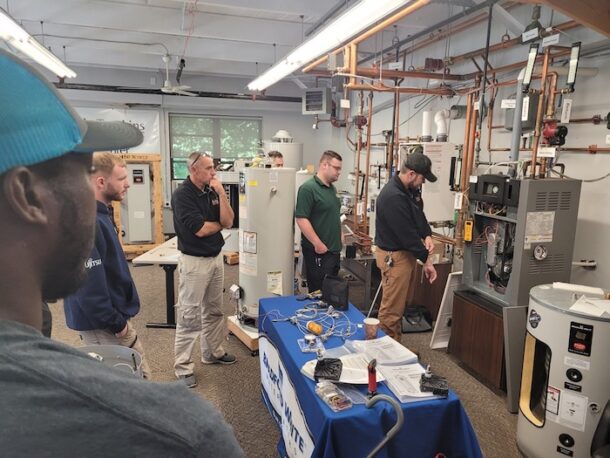The business training and coaching experts energized contractors and industry leaders to take on the new year to conquer new challenges Business Development Resources (BDR), the training and business coaching authority for home services industry professionals, provided over 300 industry leaders the opportunity to climb higher and build connections at this year’s SPARK, the ultimate event for Read more
training

The business training and coaching experts energized contractors and industry leaders to take on the new year to conquer new challenges
Business Development Resources (BDR), the training and business coaching authority for home services industry professionals, provided over 300 industry leaders the opportunity to climb higher and build connections at this year’s SPARK, the ultimate event for contractors.

Held Jan. 15-18 at The Broadmoor in Colorado Springs, SPARK 2025 provided attendees with a diverse range of informative breakout sessions, inspirational keynote talks, and endless opportunities to network alongside top contractors in the industry. SPARK aims to share, promote, accelerate, revamp, and kickstart growth for home service providers’ vision, team, and business in the coming months.
“Each year, SPARK succeeds in sending our attendees into the new year with renewed enthusiasm and actionable plans for their business,” said BDR President Kim Archer. “Our conference’s main purpose has always been to help professionals in our industry make meaningful connections. Every year, SPARK attendees amaze and inspire me with their incredible collaboration and unstoppable networking energy!”
Highlights of SPARK 2025 included:
- Dynamic keynote sessions led by Kyle Scheele, known as “the patron saint of crazy ideas,” and Ben Nemtin, the No. 1 New York Times bestselling author of “What Do You Want to Do Before You Die?” and “The Bucket List Journal.”
- Various power-packed breakout sessions covered a wide range of game-changing topics—mastering data to scale your business, fostering a culture of innovation, refining marketing channels, and leading with efficiency to drive unstoppable sales growth.
- Networking activities included tours of Garden of Gods Park, walking downtown Colorado Springs, Broadmoor cooking demonstrations, a pickleball tournament, power-up training sessions, and so much more!
SPARK sets to ignite the home service industry with its highly anticipated return in January 2026, heading to the Omni Amelia Island Resort and Spa in Florida. As with the 2025 event, attendees can expect impactful keynote sessions, exclusive workshops, and expert-led discussions to deliver actionable insights and tools for their business’s growth. With Amelia Island’s pristine beaches, historic downtown, and vibrant Southern hospitality as the backdrop, this event promises to be a must-attend for those ready to elevate their businesses.
Early registration is now open at https://www.bdrco.com/spark.
For more information about BDR events, visit https://www.bdrco.com/upcoming-bdr-events/.
Upcoming courses will give contractors insights and best practices to succeed in an increasingly competitive market. Seattle—Business Development Resources (BDR), a trusted provider of business coaching and training services for the HVAC, plumbing, and electrical industries, announces its upcoming lineup of virtual contractor training courses to help enhance home service business growth in the coming Read more
Upcoming courses will give contractors insights and best practices to succeed in an increasingly competitive market.
Seattle—Business Development Resources (BDR), a trusted provider of business coaching and training services for the HVAC, plumbing, and electrical industries, announces its upcoming lineup of virtual contractor training courses to help enhance home service business growth in the coming winter season.

These sessions cover a wide array of essential topics, offering actionable insights and strategies to drive profitability, improve customer relations, and streamline operations. “The home services market is becoming more competitive every year,” said Matt MacArthur, Sr. Vice President of Training at BDR. “For that reason, we’re offering a full slate of educational courses to help contractors close out 2024 strong and start 2025 on the right foot.”
With 10+ virtual training events over the next four months, BDR provides contractors access to a wide range of information vital to the growth and success of their business. Topics in these upcoming trainings cover all areas of a contractor’s business, including:
- Mastering Productivity: Strategies for Prioritization, Time Management, & Delegation (December 18, 2024)
This power-packed class offers practical tools and resources for improving productivity to help attendees gain control over their day and allow them to be more effective in their lives and job roles. - The Home Service Blueprint: 5 Core Pillars for Building Your Dream Business (January 9, 2025)
In this one-day intensive workshop, business owners and managers will learn five foundational strategies to increase profitability and success and immediately enhance their HVAC and plumbing business. - Top Gun Technician Excellence: Beyond Diagnostics (January 30-31, 2025)
In this session, service technicians learn the soft skills to perform their jobs better, driving customer satisfaction, sales leads, and referrals through a defined service delivery procedure. - Customer Experience University (February 6-7, 2025)
This course teaches sales and install coordinators a structured retail process to help build long-lasting customer relationships, close more appointments, and position the company for referrals.
“The way the home service industry operates has changed dramatically over the last decade,” MacArthur said. “In order to remain competitive, contractors must adapt to increased consumer expectations. From office management to improving point-of-sale opportunities, these training courses can help position business owners for growth and expansion as the market changes.”
For more information about BDR’s upcoming contractor training schedule, visit https://www.bdrco.com/upcoming-bdr-events/.

By Chris Hondl, Nexstar Network Sales Coach Before I got into sales, I was a teacher. I taught for five years at the elementary level. My wife was also a teacher. At the time, we were newly married, with no kids, and looking ahead to how we were going to afford kids, buy a house Read more
By Chris Hondl, Nexstar Network Sales Coach
Before I got into sales, I was a teacher. I taught for five years at the elementary level. My wife was also a teacher. At the time, we were newly married, with no kids, and looking ahead to how we were going to afford kids, buy a house, and put together all the other pieces that come along with the American Dream.
Unfortunately, our two little teacher paychecks didn’t add up to making that happen. So, I took a stab at getting a second job. I had seen advertisements for the Minnesota School of Bartending and I decided to enroll, with hopes of teaching by day and bartending on nights and weekends. I went through the program and achieved the lifetime certification, which proved I had mastered how to make more than 100 of the most popular cocktails and knew about all the top brand-name liquors.
That was almost two decades ago, and I have yet to make a single drink as an official and employed bartender. In fact, if you were to ask me for any of those 100+ drinks I am “certified” to make, the only one I think I would be able to make you would be one of the simplest: a rum and coke.

You see, I never adopted my newfound bartending skills into practice. I learned the skills, but I never used what I learned afterward.
We see the same thing in our own businesses, don’t we? We send an employee to a session, and they gain all of these new skills and ideas, and then what? They come back to work. And if we don’t actively apply what your employees learned in the field, it’s eventually as if the session never happened. What a waste of time and money!
Recently, I asked the 40+ previous attendees of the Sales Objection Bootcamp about the effectiveness of the bootcamp.
The results I got back from the attendees, four months after the session occurred, generally fall into three buckets:
- We haven’t done a thing with the information we learned at the Sales Objection Bootcamp since we left, and we’re seeing the same results we were getting before the training.
- We realized we have some process issues to fix before we continue with what we learned in the Sales Objection Bootcamp.
- We are following the plan we learned and seeing amazing results!
These answers aren’t in the least bit surprising. It’s just like me and my experience with bartending school. Had I attended the school and then immediately gone out and begun bartending, the skills I had learned at school would have become second nature and helped me realize my goal of making money as a bartender. But since I never practiced what I learned, I ended up in the same place I was in before I attended bartending school: with no results, not retaining what I had learned, and not making money as a bartender.
Participating in the bootcamp is only half of the journey. Putting what you learn into practice is the other, more important half.
There are a lot of sales-focused training courses out there for our industry. Take time to identify the right one for you and your team. For example, the Sales Objection Bootcamp we’ve developed here at Nexstar is an intensive three-day session where your dedicated sales coach comes to your location and works with your team to master their presentations and objections such as: Price, Spouse, Shopping Around and many more.
Want proof that it all works? Here’s feedback from a member who is following the plan and currently seeing incredible results:
Nathan Andreas, owner of , attended Sales Objection Bootcamp with his sales team. Since returning home and practicing what they learned, their closing rate has gone well above their budgeted goal, with one salesperson averaging 69% closing on tech leads and 55% closing on marketed leads. Nathan says the take-aways that have been key to their success are:
- Buying into having a strong sales process before presentation
- Maximizing skills-practice
- Clarifying the objection
- Digging deeper to uncover the real objection
- Using a trial close prior to asking for the sale
- Riding along with his team
So! Are you ready to dramatically increase your sales in FY25? It will take commitment and follow-through. Otherwise, would you prefer to keep getting the same results you’ve always gotten?
 Chris Hondl serves as one of two Sales Coaches at Nexstar Network and has more than 15 years of experience in coaching, training, and sales. If you are a Nexstar member and are prepared to implement what you’ve learned in the Sales Objection Bootcamp, contact your Sales Coach for an assist. If you’re not a Nexstar member, but you’re curious to learn more, click here.
Chris Hondl serves as one of two Sales Coaches at Nexstar Network and has more than 15 years of experience in coaching, training, and sales. If you are a Nexstar member and are prepared to implement what you’ve learned in the Sales Objection Bootcamp, contact your Sales Coach for an assist. If you’re not a Nexstar member, but you’re curious to learn more, click here.

Industry sales experts Candy and Mike Cunningham will lead four in-depth live virtual workshops designed to help members navigate the sales landscape and implement a strategic vision for growth Business Development Resources (BDR), the training and business coaching authority for home services industry professionals, announces the return of its Trailblazer Sales Academy, an ongoing sales development Read more
Industry sales experts Candy and Mike Cunningham will lead four in-depth live virtual workshops designed to help members navigate the sales landscape and implement a strategic vision for growth
Business Development Resources (BDR), the training and business coaching authority for home services industry professionals, announces the return of its Trailblazer Sales Academy, an ongoing sales development program specifically for territory managers and distribution sales teams.
Trailblazer Sales Academy helps participants develop sales skills, leadership agility, and a strategic vision for territory growth through four live virtual workshops with additional tools and resources for continuing learning. The program is led by BDR trainers Candy Cunningham and Mike Cunningham and is based on their combined four-plus decades of experience as top-performing territory managers.

“We’re preparing territory managers and distribution sales teams to blaze their own trails and make their dream territories a reality,” said Matt MacArthur, Senior Vice President of Training and Marketing for BDR. “Trailblazer Sales Academy equips members with all the tools they need to build and implement the strategies and processes that will help them reach their goals by taking ownership of their sales results.”
Trailblazer Sales Academy kicks off in January 2025 and runs through May. Each four-hour training session teaches participants the best practices for top-performing territory managers. Sessions for the academy include:
- Drive Sales and Help Dealers Win in Q1 (Jan. 7): Discover how to drive first-quarter results and help your dealers check pricing and costs to ensure they are well-positioned for the year.
- Build Your Strategic Sales Call Process (Feb. 11): Learn how to build a checklist to prepare for a sales call and develop a strategic sales process to follow before, during, and afterward.
- Find the Right Dealer Through Targeted Prospecting (April 3): Learn the knowledge and skills to effectively identify and engage with high-potential prospects to maximize your results.
- Help Dealers Install More Jobs Through Labor Leverage (May 8): Discover proven methods for helping dealers install more jobs through leveraging labor and optimizing their workforce effectively.
The academy also includes self-paced courses to help participants continue to develop their skills in between the live sessions, along with targeted podcasts episodes to prepare academy members for their next workshop.
Learn more about the Trailblazer Sales Academy at https://www.bdrco.com/trailblazer-academy/.

If you have always wanted to become a plumber then you may be wondering how to go about this. Plumbing is a wonderful career to get into as there will always be people with leaks or other issues that need to be fixed. However, it is not as simple as just going out into the Read more
If you have always wanted to become a plumber then you may be wondering how to go about this. Plumbing is a wonderful career to get into as there will always be people with leaks or other issues that need to be fixed. However, it is not as simple as just going out into the big wide world fixing peoples sinks and toilets. You will need to get the right level of education and experience if you want to create a successful plumbing business.
Get Educated
One of the first things you need to do if you want to run your own business is get educated. This means heading to college or taking an apprenticeship to get the right qualifications. When people are looking for a plumber to help them they will look at things like qualifications, paperwork, and experience. If you don’t have what they need then you may struggle to find work. It can sometimes be better to do an apprenticeship in plumbing and get into it that way, at least then you will gain valuable experience along the way.

Licenses & Registration
Another thing you will need before you head off into the wide world of plumbing is the correct licenses and paperwork. You need to register to be a plumber and what you need will vary depending on your state. Make sure you know what you need at the last thing you want is to be missing something when you go to apply. Being registered means people will be able to find you easier and they can trust you have met all the minimum requirements.
Target Audience
Before becoming a plumber it can be useful to do some market research. This involves looking around your local areas to see if there is any need for plumbers. Great news, if there are that many around then you should get a great deal of customers and clients contacting you. You can find out whether there is any need for plumbers by sending out polls to potential customers. This can also be done on social media platforms, people can click yes or no depending on the questions you ask.
Funding
When you are about ready to open up your new plumbing business then you need to work out how much funding you need. This will provide you with everything you need, from tools to marketing, and everything in between. If you don’t have this money to hand then there are a couple of things you can do. You could apply for either a business loan or a credit card, as you won’t need high amounts like other businesses to get started.
Equipment
Finally, as a fully fledged plumber you will require the right tools and equipment. You will be dealing with many different nuts, bolts, and faucets during your work day. Kit yourself out with everything you need, you never know when you will need it. Brand new stuff can be expensive so don’t be afraid to buy second hand, used goods. As long as they are in full working order you can give them a new lease of life. When you are finished on jobs and you have taken pipes and other metals out then you could scrap it with scrap dealers near me.
We hope you found this article helpful and that it gave you some ideas, tips, and guidance on what you need to open and run a successful plumbing business.
